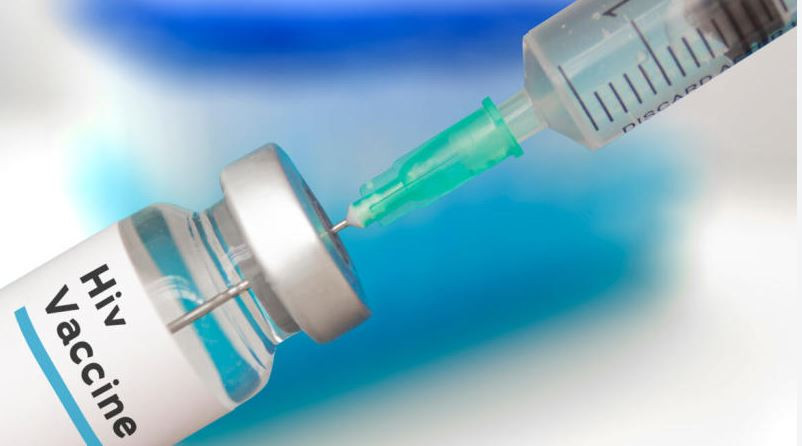Alarming Rise in Newborn HIV Cases Linked to Breastfeeding

Despite ongoing efforts to curb mother-to-child transmission (MTCT) of HIV, Kenya is experiencing a concerning rise in the number of newborns infected with the virus. A new report, titled 'Triple Elimination – Private Health Sector and Professional Association Engagement,' released by the National AIDS and STIs Control Programme (NASCOP) and UNAIDS, highlights that many infants are contracting the virus during breastfeeding. The report also points to alarmingly low rates of early infant diagnosis and access to treatment.
The study reveals a significant increase in mother-to-child HIV infection, climbing from 7.3 per cent in 2023 to 9.3 per cent in 2024. These infections are particularly noted in counties with a low disease burden. Nelly Pato, who leads the Prevention of Mother-to-Child Transmission (PMTCT) of HIV at NASCOP, explained that some mothers do not receive Antiretroviral (ARV) drugs during pregnancy, while others discontinue their treatment, leading to vertical transmission. Dr. Pato emphasized that early infant diagnosis presents a significant challenge in the fight against HIV, noting that children are falling behind. She cited November 2024 data, which indicated that only 67 per cent of babies with HIV were initiated on treatment, and among them, just 64 per cent achieved viral suppression.
Further compounding the issue, many women only discover their HIV status during antenatal clinics (ANC), which markedly increases the risk of infection for their newborns. Dr. Pato underscored the vulnerability of children, stating, “Babies depend on guardians and their parents for their treatment, but when they fail, they end up defaulting, with some dying.” The report provides a grim picture of the national HIV landscape: 1,326,336 people are living with HIV, and new HIV infections rose from 16,000 in 2023 to 19,991 in 2024. Furthermore, 21,077 individuals succumbed to AIDS-related complications, with 2,685 of these deaths being children aged between zero and 14 years. In the same age group, 62,798 children were infected with the virus. Children continue to have low treatment coverage, at only 75 per cent, despite high infection and death rates, with their viral suppression standing at 66 per cent.
The report was unveiled during the signing of commitments focused on the triple elimination of HIV, syphilis, and Hepatitis B. These commitments, signed by the Ministry of Health and various stakeholders, including private and faith-based hospitals, aim to strengthen health systems and improve access to care. Dr. Pato stressed the necessity of adopting a multifaceted approach to eliminate HIV transmission from mothers to babies, advocating for the involvement of partners, particularly private hospitals, where many transmissions currently go uncaptured in national data.
Echoing the call for greater private sector inclusion, Peter Hamisi, General Secretary for private health facilities, highlighted that private hospitals have historically not prioritized testing, treatment, and follow-ups for HIV-positive pregnant mothers due to their profit-making nature. “We want the government to tell us how we should partner, because for us, it is usually about business,” Hamisi stated, adding that private entities typically do not track whether HIV-positive mothers are on treatment or have suppressed viral loads. He asserted that engaging private hospitals would enable the government to collect more crucial data for HIV/AIDS prevention and treatment, emphasizing the wealth of data the private sector holds that could greatly benefit national planning and programming. Hamisi also called for the government to allocate funds for HIV treatment in private hospitals under the Social Health Authority (SHA).
Dr. Patrick Oyaro, Chief of Party at LVCT Health, who was also present during the public-private partnership commitment signing, acknowledged that despite efforts to strengthen HIV services, mother-to-child transmission remains a significant challenge. As a practical solution, LVCT Health supports the national program by ensuring that all pregnant and breastfeeding women are tested for HIV and by training healthcare workers nationwide to deliver these essential services. A core aspect of their work, Dr. Oyaro explained, is ensuring accurate data collection and reporting, which he deemed critical for informed planning and the proper supply of commodities. “There is no way you can plan appropriately without reliable data,” he stated, emphasizing the need for accurate figures to identify gaps and determine necessary interventions.
However, the fight against HIV/AIDS in Kenya has been impacted by a freeze on foreign aid. This has particularly affected the healthcare workforce, as many health workers employed under donor-funded programs may need to transition to government structures. As a mitigation strategy, Dr. Oyaro suggested integrating HIV services into broader health systems. LVCT Health is actively engaging with the private sector, recognizing its pivotal role in the HIV response. He underscored the importance of the private sector not only offering services but also reporting data into the national health information system. Dr. Oyaro concluded by stressing that the private sector can also help mobilize resources and complement government efforts, especially in areas where the public health system faces strain.
You may also like...
Diddy's Legal Troubles & Racketeering Trial

Music mogul Sean 'Diddy' Combs was acquitted of sex trafficking and racketeering charges but convicted on transportation...
Thomas Partey Faces Rape & Sexual Assault Charges

Former Arsenal midfielder Thomas Partey has been formally charged with multiple counts of rape and sexual assault by UK ...
Nigeria Universities Changes Admission Policies

JAMB has clarified its admission policies, rectifying a student's status, reiterating the necessity of its Central Admis...
Ghana's Economic Reforms & Gold Sector Initiatives

Ghana is undertaking a comprehensive economic overhaul with President John Dramani Mahama's 24-Hour Economy and Accelera...
WAFCON 2024 African Women's Football Tournament

The 2024 Women's Africa Cup of Nations opened with thrilling matches, seeing Nigeria's Super Falcons secure a dominant 3...
Emergence & Dynamics of Nigeria's ADC Coalition

A new opposition coalition, led by the African Democratic Congress (ADC), is emerging to challenge President Bola Ahmed ...
Demise of Olubadan of Ibadanland
Oba Owolabi Olakulehin, the 43rd Olubadan of Ibadanland, has died at 90, concluding a life of distinguished service in t...
Death of Nigerian Goalkeeping Legend Peter Rufai

Nigerian football mourns the death of legendary Super Eagles goalkeeper Peter Rufai, who passed away at 61. Known as 'Do...




